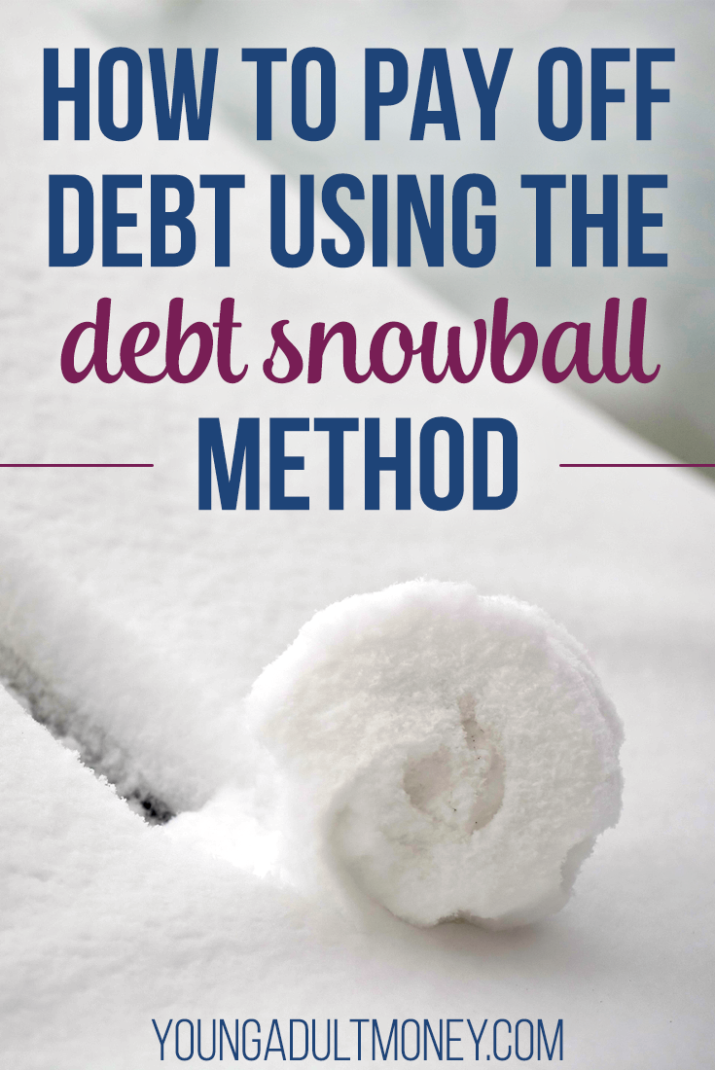 The debt snowball is often talked about as a powerful tool to pay off debt.
The debt snowball is often talked about as a powerful tool to pay off debt.
But what is it really? Does it work? Is it the only way to pay off debt?
In short, the snowball is a debt repayment method where you start by paying your smallest debt first. Once the first debt is paid off, you use the money you were paying towards debt #1 to pay off debt #2. And so on until you are debt free. The debt snowball method disregards interest rates so you are paying simply based on balance.
Since this method ignores the interest rate of debt, some personal finance experts disagree with the practice. Mathematically speaking, it makes more sense to pay off the debt with the highest interest rate first to save more money in the long run. This method is often referred to as the debt avalanche. But according to Dave Ramsey, who coined the terms, the debt snowball provides an edge because it is based on psychology, not math.
Here we will explore how the debt snowball works and its pros and cons.
Step 1: List All Of Your Debt
In order for the debt snowball to work, you need to know exactly what type of debt you have.
Make a list of all of your debt, including the balance, interest rate, and minimum payment. Then reorder the list to put your debt with the smallest balance at top, the second smallest balance under that and so on.
You can use this free student loan tracker to keep track of all of your debt (not just student loans).
Remember, the debt snowball works by paying off the debt with the smallest balance first. If the amount of debt you have is painful to look at, remind yourself that you will be focusing on just one debt at a time.
Step 2: Analyze Your Budget
To pay off debt #1 as quickly as possible, you will need to put all of your energy and resources towards it. Any extra money you can muster should go to pay off this debt.
By analyzing your budget, you should be able to come up with a few extra dollars at the very least. Find anyway you can to slash your expenses, such as cutting cable, saving on groceries, or selling items in your home for extra cash. All of this money should go directly towards paying off debt #1.
Step 3: Continue Making Minimum Payments on All Other Debts
Even though you are focusing on paying down one debt, you obviously cannot ignore the other debts. You may have quite a few other debts that still require payment.
Continue to pay the minimum on these debts. You can set these bills on autopay to ensure your lender always receives payment. Then you can focus all of your energy on the smaller of the debts you are working to pay off.
Step 4: Put All of Your Energy and Extra Cash Towards Your Smallest Debt
Remember, you are trying to pay off the smallest debt as quickly as possible. Every dollar counts, so the key here is to throw everything you can towards this debt.
Set a goal as to how quickly you plan to pay this first debt off and do everything you can to reach that goal.
One thing you can do drastically hasten the debt repayment process is to start a side hustle. Any money made from the side hustle can be used to pay off debt using the debt snowball method.
Step 5: Repeat
Once your first and smallest debt is paid off, you simply repeat the cycle with your second smallest debt. All of the money you were previously using to pay off your first debt can now be used to pay down the second debt plus the minimum that you had previously been paying.
And so on and so on. The “snowball” is symbolic of the momentum this process provides. The amount you can pay towards each debt keeps growing and growing with the more debt you pay off. You repeat the process until you are entirely debt free.
Example of the Debt Snowball
Let’s lay out what the debt snowball might look like in action.
Pretend the individual in the example below had a total debt of $46,500. His or her debt might break down to something listed as below:
Credit Card #1: Balance of $500 and minimum payment of $50.
Credit Card #2: Balance of $6000 and minimum payment of $100.
Car Loan: Balance of $10,000 and minimum payment of $250.
Student Loan: Balance of $30,000 and minimum payment of $300.
This individual’s minimum monthly payments equal $700. This person is serious about paying off debt with the snowball method. He or she slashes expenses and starts a side hustle to earn extra income, which results in an extra $300 a month that can be put towards debt.
In the first month, the debt snowball would look something like this:
Credit Card #1: Balance of $500 and minimum payment of $50. Person pays $350.
Credit Card #2: Balance of $6000 and minimum payment of $100. Person pays $100.
Car Loan: Balance of $10,000 and minimum payment of $250. Person pays $250.
Student Loan: Balance of $30,000 and minimum payment of $300. Person pays $300.
With an extra $300, that first credit card will be wiped out in no time. Once credit card #1 is demolished, the $300 of extra cash plus credit card #1’s payment will be put towards credit card #2. The debt snowball will look like this:
Credit Card #1: Balance of $500 and minimum payment of $50. Person pays $350.
Credit Card #2: Balance of $6000 and minimum payment of $100. Person pays $450.
Car Loan: Balance of $10,000 and minimum payment of $250. Person pays $250.
Student Loan: Balance of $30,000 and minimum payment of $300. Person pays $300.
In a few more months, credit card #2 should be paid off entirely. And so the process continues.
The Theory Behind the Debt Snowball
To be honest, not all financial gurus recommend this method. Why?
The debt snowball disregards interest rates entirely in its foundation. When you practice the debt snowball, you are prioritizing the smallest debt first. This could mean you are paying a debt with a 2% interest rate before a debt with a 20% interest rate. Mathematically, there are big flaws in this theory.
That is why many financial experts recommend using the debt avalanche method. This method is similar to the debt avalanche, but instead of listing your debt in order of balance from small to large, you list it from largest interest rate to smallest. The process is the same, but the debt avalanche has users prioritize high-interest debt first.
If the debt snowball doesn’t make the most sense mathematically, then why do people recommend it?
The debt snowball is based on psychology versus math. By paying off your smallest debt first, you are going to feel like you are making progress. The point is to build your momentum. Once you pay off that first debt, you want to pay off more. It’s less overwhelming to start focusing on your debt because it feels like a smaller, more attainable goal. Paying down a $500 debt is much less intimidating than paying down a $30,000 debt.
Experts argue that the psychology behind the debt snowball allows people to pay off more debt more quickly. If you are trying to do the debt avalanche because it mathematically makes sense, you might not be as motivated as you would be while doing the debt snowball method.
Which Debt Repayment Method is Right for You?
Both the debt avalanche and debt snowball have been proven effective. Though the choice is dependent on your own personal preference, here are a couple of common denominators that may help you decide.
If you tend to be a spender and are intimidated by the amount of debt you have, then the debt snowball could be a good method for you.
If you typicially consider yourself a saver and you enjoy analyzing your money, then the debt avalance could be the better method for you.
There really is no wrong way to pay off debt. Focus on making more money, spending less, and tackling your debt as aggressively as possible. These methods can certainly help you organize your debt but the work you have to do to pay off the debt is the same.
Related:
What methods have you used to pay off debt? Do you think the debt snowball method would work for you?



interesting, honestly I’m glad to be debt free and until I find my dream home I hope to keep this status:P…however this is a very helpful post:D
Glad to hear you are debt free now, Giulia! Your hard work has been paying off.